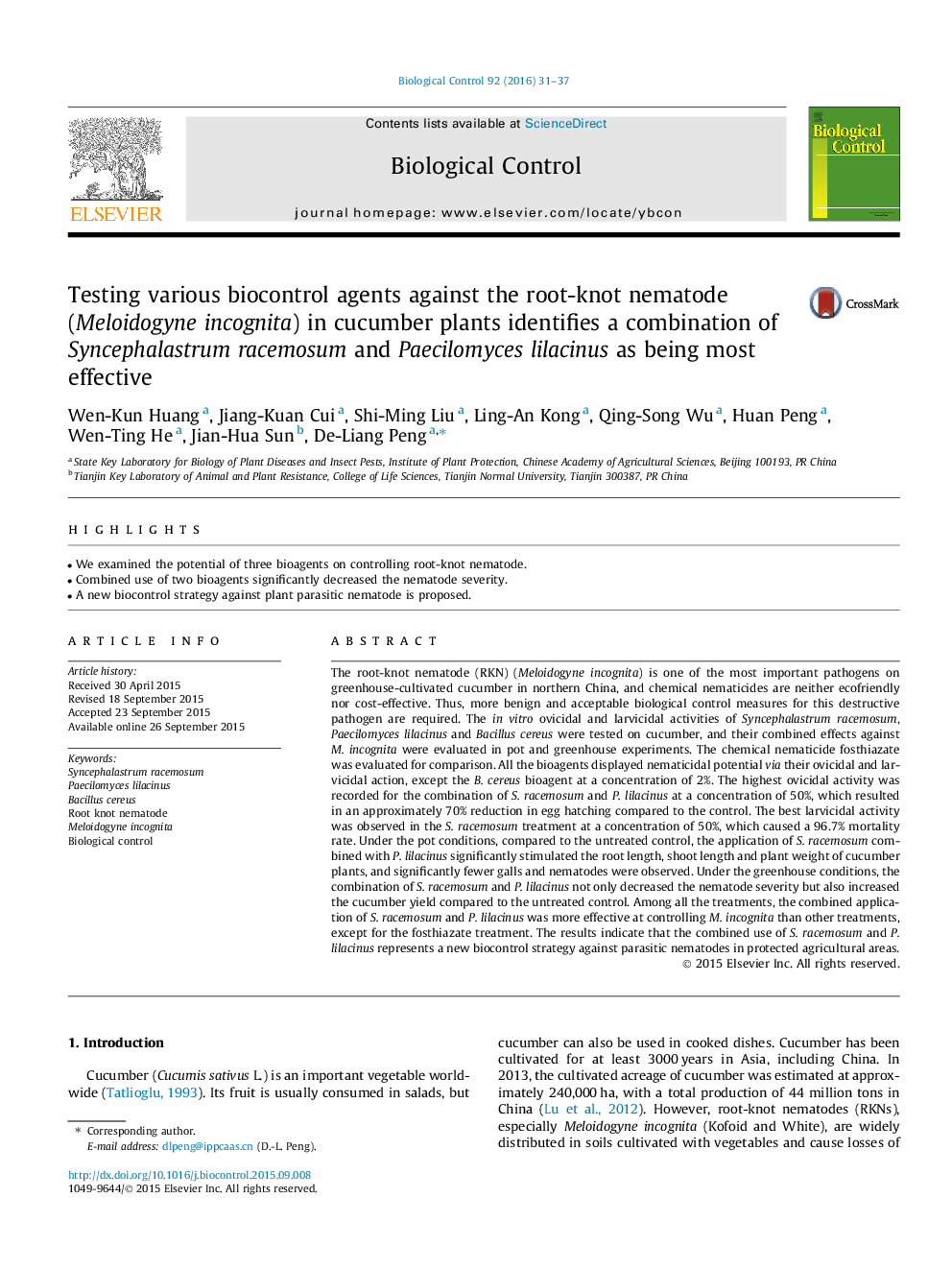| Article ID | Journal | Published Year | Pages | File Type |
|---|---|---|---|---|
| 4503703 | Biological Control | 2016 | 7 Pages |
•We examined the potential of three bioagents on controlling root-knot nematode.•Combined use of two bioagents significantly decreased the nematode severity.•A new biocontrol strategy against plant parasitic nematode is proposed.
The root-knot nematode (RKN) (Meloidogyne incognita) is one of the most important pathogens on greenhouse-cultivated cucumber in northern China, and chemical nematicides are neither ecofriendly nor cost-effective. Thus, more benign and acceptable biological control measures for this destructive pathogen are required. The in vitro ovicidal and larvicidal activities of Syncephalastrum racemosum, Paecilomyces lilacinus and Bacillus cereus were tested on cucumber, and their combined effects against M. incognita were evaluated in pot and greenhouse experiments. The chemical nematicide fosthiazate was evaluated for comparison. All the bioagents displayed nematicidal potential via their ovicidal and larvicidal action, except the B. cereus bioagent at a concentration of 2%. The highest ovicidal activity was recorded for the combination of S. racemosum and P. lilacinus at a concentration of 50%, which resulted in an approximately 70% reduction in egg hatching compared to the control. The best larvicidal activity was observed in the S. racemosum treatment at a concentration of 50%, which caused a 96.7% mortality rate. Under the pot conditions, compared to the untreated control, the application of S. racemosum combined with P. lilacinus significantly stimulated the root length, shoot length and plant weight of cucumber plants, and significantly fewer galls and nematodes were observed. Under the greenhouse conditions, the combination of S. racemosum and P. lilacinus not only decreased the nematode severity but also increased the cucumber yield compared to the untreated control. Among all the treatments, the combined application of S. racemosum and P. lilacinus was more effective at controlling M. incognita than other treatments, except for the fosthiazate treatment. The results indicate that the combined use of S. racemosum and P. lilacinus represents a new biocontrol strategy against parasitic nematodes in protected agricultural areas.
